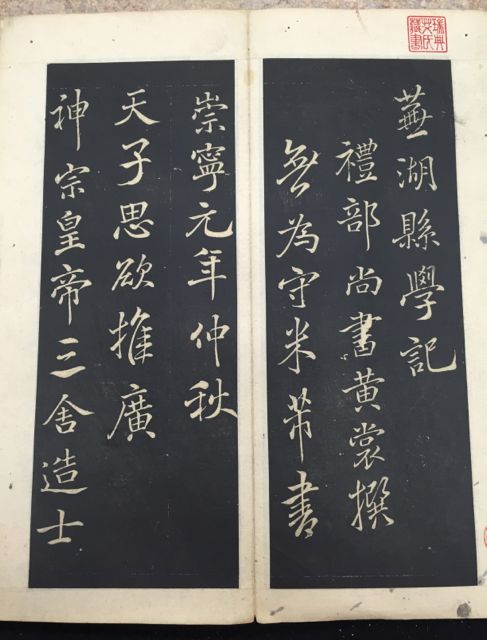Coherence through abstraction
Some of you may know that I’m at Rare Book School this week, taking The History of the Book in China with J. Soren Edgren. I was very lucky to receive a Director’s Scholarship which allowed me to attend this year, and I was thrilled to see that Soren was teaching his class again.
You see, my great-grandfather was a great many things in his life—aviator, decorator, all-around tinkerer and craftsman (he could turn any object into a lamp, apparently)—but he was also a publisher, bookseller, and collector of East Asian books and artifacts who fancied himself as a kind of sinologist.* His collection remains (some of it anyway) in my mother’s custody, and this class is my first real attempt at understanding his passion through formal study. Although I’m not quite sure where this course will take me professionally, it will most certainly effect my personal and intellectual growth, and I will likely be called upon at some point to work with my great-grandfather’s collection.

This was one of the many fascinating objects that we studied in class. Fatie rubbings are ink-squeeze rubbings of model calligraphy that have been placed in an album binding. And yet. It’s a completely new direction for me, so I’ve read the assignments as an outsider looking in, and I can’t help but draw parallels with what’s been occupying my brain for the last few years while I learn all that digital stuff. In part, I think this is a natural (and necessary) response to interdisciplinary or comparative work: having been tossed into a morass of new material, I’m desperately searching for something familiar, clutching at anything remotely recognizable and pulling myself up to coherence through abstraction. The problem is, though, that after the newness wears off (in, say, six months or so of study) all of those familiar nuggets start to blend in with the rest of the muck and my research signposts have all but disappeared.
So this time I’m going to try to capture those initial sparks of inquiry, to roughly sketch out some of the areas I’d like to research further and, more generally, have a record of what stood out to me as a beginner.
However. Sometimes the gap between astute observation and oversimplified generalization is quite thin. With that in mind, here are some of the points of interest I’d like to note:
-
I’m struck by the hierarchy of permanence in the Chinese textual tradition and its parallels with our current moment and internet culture. I’m thinking here about copyright, ephemerality, and the concept of “editions,” in relation to xylographic printing and handwritted transcriptions or rubbings (from the stone classics, for example) and the Buddhist sutra copying – the imperative to copy the sacred texts as a ritual act.
-
This is probably not the proper term, but something like a textual fluidity appears to characterize the history and practice of books in China: books were expected to be rebound, copied, revised, and rewritten. They could be made by scholars themselves (thread binding does not require large machinery) and even the earliest books were incredibly convenient with thin paper in a form resembling the modern paperback. Combine this with the tradition of transcription and copying, and it starts to sound a lot like the web.
-
The long transition from manuscripts to printed books and their coexistence in China is reminiscent of what we are experiencing now with print and digital books. I’d like to find some scholarship that looks at the evidence of these earlier transitions to speculate about “the future of the book.”
-
Instructor’s observation: 12th century Chinese book enclosures were light, airy, thin. Comparatively, western books of the period were bound in systems of bondage (!!!) – surely there is something to be written about here
-
I would love to read something general about the ties between religion and the history of the book. In both the East and the West, religious proselytizing was a motivation for the spread of printing, and it seems that the study of book history and bibliography have been connected to religion in other ways. This has me thinking, and asking, what does it mean to study the materiality of books in the absence of the sacred?
We’re only on day 2 of the week-long course, and I will try to blog about it more before it’s over. I haven’t even begun to discuss the issues around the shared (or competing) terminology used by book historians of the east and west, or the unfortunate tendency of western book specialists to brush aside the rich and important history of Chinese woodblock printing. And then there’s the whole being flooded with feelings thing that happens as I take a deep dive into family history…
But before any of that I’ll head over to more familiar territory tomorrow tonight with this week’s RBS evening lecture on “Scholarly Publishing at the Crossroads.” Anon!
* of course, back then he called himself an Orientalist, which my be more precise considering his interests were broader than China alone, but I can’t really bring myself to say that.